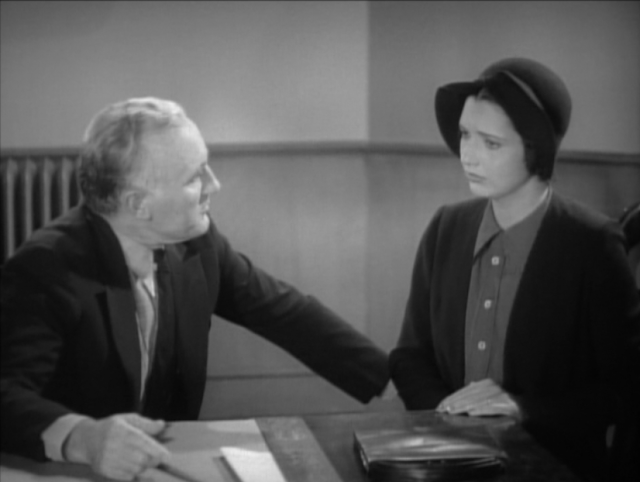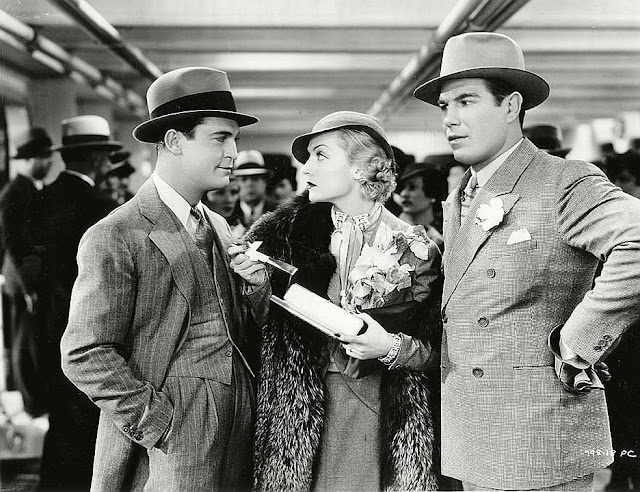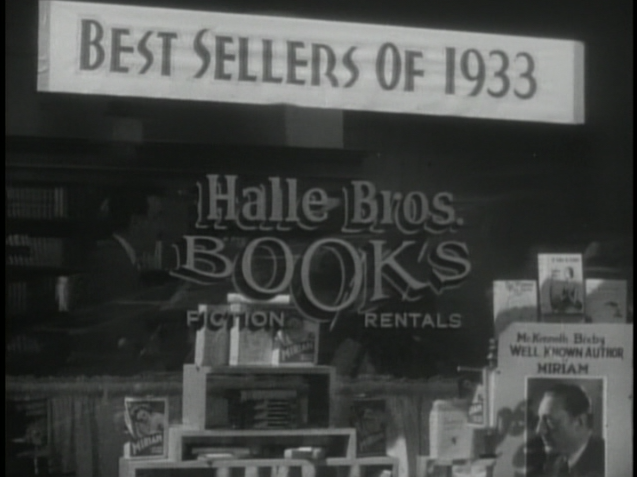Tony Baxter (Joel McCrea) is a full-time lawyer, part-time womanizer. He sets his sights on Ann Gray (Maureen O'Sullivan) when he spots her at the court house. Little does he know she's the defendant in a murder trial led by District Attorney Martin (Lewis Stone). When the jury finds her guilty, Ann is whisked away by a police escort which is later involved in a car crash. In the chaos of the accident, Ann makes her escape and by chance catches a ride with Tony who takes her back to his place. Baxter tries to hide Ann from his glamorous fiancee Betty (Adrienne Ames) with the help of his devoted butler Peedles (Robert Greig). When Tony finds out that not only is Ann on the lam from the cops she's also wanted by gangster Smiley (Louis Calhern), the real murderer, he helps her escape. Even embroiled in a sticky situation, Tony is determined to get the girl. Can they prove that Ann is innocent of this heinous crime?
Woman Wanted (1935) was directed by George B. Seitz for MGM. It's based on an original story by Wilson Collison and adapted to the screen by Leonard Fields and David Silverstein. According to the AFI, "following the release of Woman Wanted, a Hollywood Reporter news item noted that, due to a studio error, too many names appeared in the writers credit in the preview credits. Only Fields, Silverstein and Collison were intended to receive writing credits." It was originally called Manhattan Madness before it was eventually changed to Woman Wanted.
The production was plagued with setbacks. Richard Boleslawski was set to direct but left two days into the project to work on O'Shaughnessy's Boy instead. Two more directors, Harry Beaumount and J. Walter Ruben, were assigned but eventually abandoned the film. MGM finally they settled on director George B. Seitz. For the lead role of Tony Baxter, Franchot Tone and Wallace Beery were considered but those plans fell through. MGM got Joel McCrea on loan. This is the only film McCrea and O'Sullivan made together. It was filmed over a couple of weeks in May 1935 and released later that year.
"Don't you worry about me, I can take care of myself." - Ann
Woman Wanted is cute movie with totally ridiculous and implausible scenarios. If you suspend your disbelief enough you'll find it enjoyable. There were several moments in the film that reminded me of other movies including Singin' in the Rain (1952) and Sullivan's Travels (1941). I couldn't help compare this with Hide-Out (1934), which also stars Maureen O'Sullivan in a story about a fugitive on the run. I reviewed that film in a previous Warner Archive Wednesday post. While Hide-Out is the better of the two films, O'Sullivan's character in Woman Wanted is a more complex character. She's strong-willed but also plagued with fear. There are two suicide attempts and while she is the victim of the story, I didn't get a sense that Tony (Joel McCrea) is coming to her rescue. The Tony-Ann dynamic is more like two partners-in-crime than a one-man rescue mission.
This movie has a superb supporting cast. I love McCrea and O'Sullivan but I also couldn't pass up the opportunity to see a movie featuring two of my personal favorites: Louis Calhern and Lewis Stone. I only wished they had a bit more screen time. I really loved the scenes with Adrienne Ames who plays the glamorous socialite Betty. She's basically playing herself but does it so well. Robert Greig does a superb job in the role of Peedles, Tony's loyal butler who cleverly maneuvers around his boss' sticky situations. He has some great lines and is the sources of most of the film's humor. Who doesn't love a good butler role? They're often the unsung heroes of a film.
Woman Wanted is a light drama that is equal parts endearing and eccentric. Worth watching for the superb cast. The brief running time of 67 minutes is also a bonus!
Woman Wanted (1935) is available on DVD-MOD from the Warner Archive Collection. When you use my buy link you help support this site. Thanks!
Warner Archive Wednesday - On (random) Wednesdays, I review one title from the Warner Archive Collection. Thank you to Warner Archive for sending me a copy of Woman Wanted (1935) on DVD for review!




























































